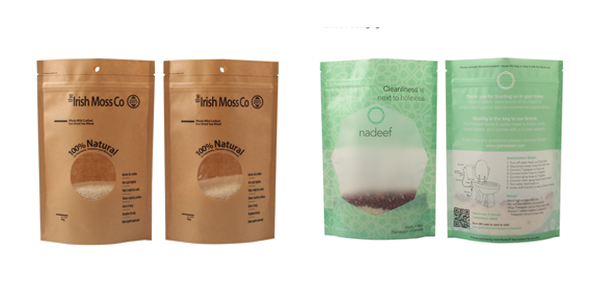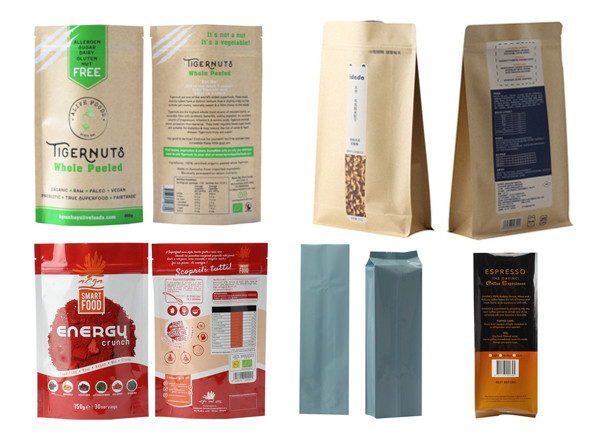Food packaging bag plastic film as a printing material, its history is still relatively short, with light and transparent, moisture-proof, oxygen-proof, airtight, tough and folding, smooth surface, can protect goods, and it can reproduce the advantages of the shape and color of the product. With the development of the petrochemical industry, there are more and more varieties of plastic films. The commonly used plastic films are polyethylene (PE), polyester aluminized film (VMPET), polyester film (PET), polypropylene (PP), nylon and many more.
The performance of various plastic films is different, the degree of difficulty in printing is also different, and the use as a packaging material is also different:
Polyethylene film is a colorless, odorless, odorless, translucent non-toxic insulating material, used in a large number of bags. It is an inert material, so it is more difficult to print and must be processed before it can print better results.
The aluminized film has both the properties of a plastic film and the properties of a metal. The surface of the film is coated with aluminum to prevent light and ultraviolet radiation, which not only prolongs the shelf life of the content, but also improves the brightness of the film. It replaces the aluminum foil to a certain extent, and has the advantages of low cost, good appearance and good barrier property. Aluminized film is widely used in composite packaging. It is mainly used in dry and puffed food packaging such as biscuits and on the outer packaging of some medicines and cosmetics.
Polyester film is colorless, transparent, moisture-resistant, gas-tight, soft, strong, acid-base oil ester and solvent, and is not afraid of high and low temperature. After EDM treatment, it has better surface fastness to ink. . Used in packaging and composites.
Polypropylene film has good gloss and good transparency, heat-resistant acid and alkali, solvent resistance, friction resistance, tear resistance, and gas permeability. It can not be heat sealed when it is lower than 160 °C.
Nylon film is stronger than polyethylene film, odorless, non-toxic, impervious to bacteria, oil, ester, boiling water and most solvents. It is generally used for load-bearing, wear-resistant packaging, and retort packaging (reheating of food) It can be printed without surface treatment.
The method of printing plastic film can be printed by flexographic, gravure and screen printing. Printing inks are required to have a large viscosity and strong adhesion, so that the ink molecules can firmly adhere to the surface of the dry plastic, and it is easily separated from the oxygen in the air and dried. Generally, the ink for the gravure printing plastic film is composed of a synthetic resin such as a pro-amine, an organic solvent mainly composed of an alcohol, and a pigment which is sufficiently ground and dispersed to form a colloidal fluid having good fluidity, and is a volatile drying ink. It has the characteristics of good printing performance, strong adhesion fastness, bright color and quick drying. It is suitable for printing with concave printing wheel.
Send your message to us:
Post time: Oct-29-2018


